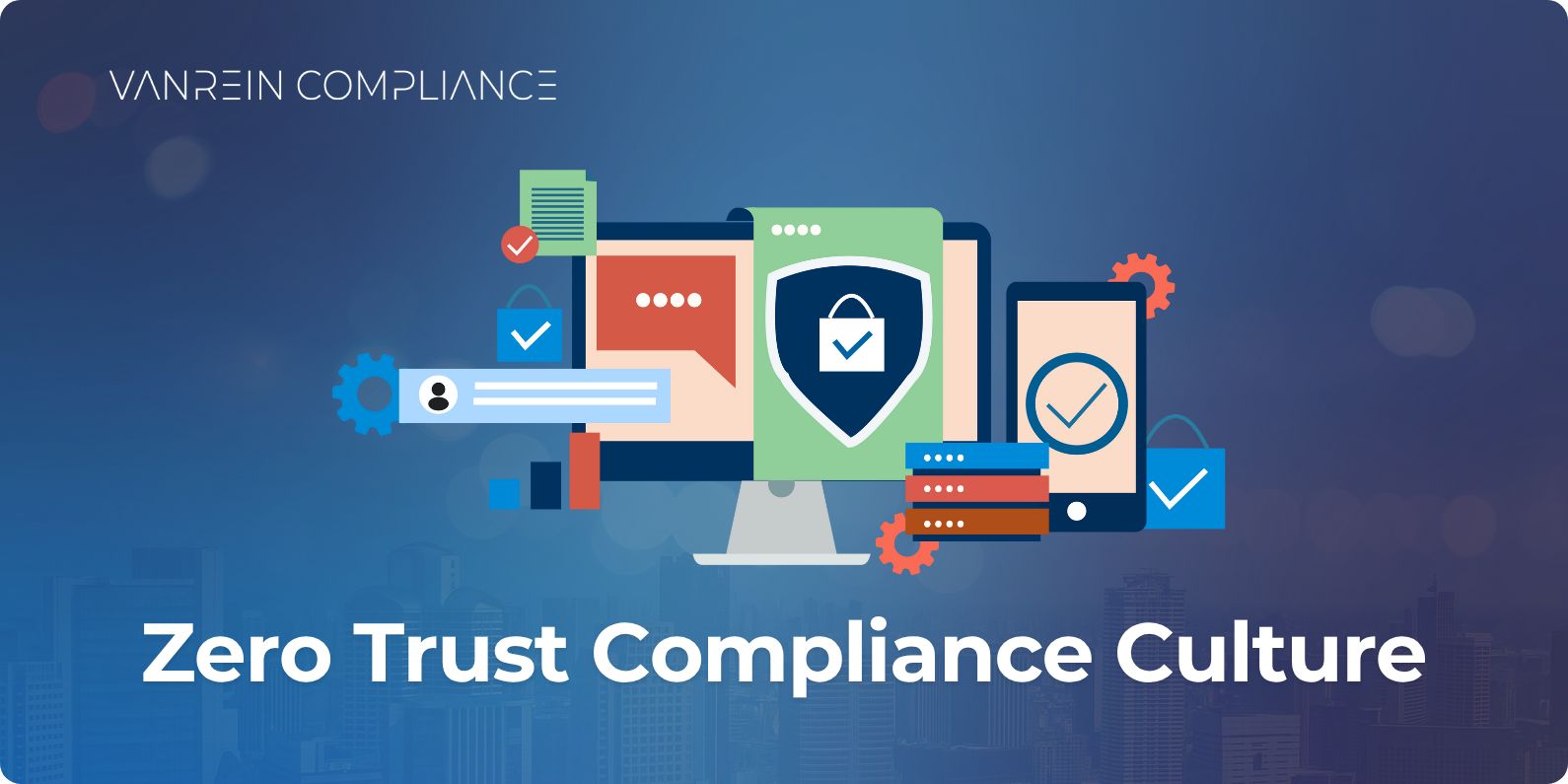- VanRein Compliance
- Posts
- The VRC Newsletter (July 17)
The VRC Newsletter (July 17)
Compliance by Design: Building a Zero Trust-Aligned Culture
Zero Trust in Healthcare, Finance, and Government
Regulated industries are under increasing pressure to protect sensitive data, and Zero Trust is quickly becoming the security framework of choice. What started as a federal government mandate is now influencing healthcare providers, financial institutions, and even state-level privacy laws.
Whether you’re subject to HIPAA, SOC 2, ISO 27001, FedRAMP, or HB 300, Zero Trust principles are shaping the future of compliance and ignoring them is no longer an option.
🔍 Zero Trust Is Taking Over
The traditional “castle-and-moat” security model—trusting everything inside the network perimeter—fails in today’s landscape of remote work, cloud apps, and increasingly sophisticated attacks.
Zero Trust flips that model with one core philosophy: never trust, always verify.
Key principles include:
✅ Least privilege access – Users only get the access they need
✅ Continuous verification – Access is continuously re-evaluated, not just at login
✅ Micro-segmentation – Networks and applications are broken into smaller zones to limit lateral movement
✅ Assume breach – Every system is designed with containment in mind
These principles align naturally with the compliance controls regulators are now demanding.
🏛️ Government and Federal Agencies Lead the Way
The push for Zero Trust is strongest at the federal level:
CISA Zero Trust Maturity Model – U.S. agencies are required to implement Zero Trust strategies by FY 2025 under Executive Order 14028.
FedRAMP – Federal cloud service providers must integrate Zero Trust principles such as continuous monitoring and strong identity controls to maintain authorization.
This government adoption is setting the tone for private sector compliance expectations.
🏥 Healthcare Is Catching Up
HIPAA doesn’t explicitly say “Zero Trust,” but the 2025 HIPAA Security Rule updates (often referred to as HIPAA 2.0) effectively push organizations in that direction:
Mandatory MFA
Encryption for PHI at rest and in transit
Annual system inventories
Stronger vendor oversight
Healthcare organizations adopting these controls aren’t just becoming compliant. They’re building a Zero Trust-aligned posture by default. VanRein Compliance is taking pro-active action on these changes in HIPAA 2.0 and is part of the reason VRC1 was created. VRC is is reviewing the changes, the impact it has on our clients and we are building and strengthening our efforts to streamline and help make your compliance journey less stressful.
💰 Finance and State Laws Follow Suit
Financial institutions are adopting Zero Trust to meet SOC 2 and ISO 27001 standards, using transaction segmentation and continuous risk scoring.
Texas HB 300, while focused on privacy, is driving stronger security measures (MFA, vendor monitoring, device-level safeguards) to protect PHI, aligning with Zero Trust behaviors.
📬 Already a VRC client? We can bundle our services saving you money and time!
⚠️ Smaller Organizations Should Care
Zero Trust isn’t just for government agencies or Fortune 500 companies. Regulators are increasingly expecting even small organizations to demonstrate access control, incident containment, and vendor risk management—all core Zero Trust practices.
Failing to adopt these principles doesn’t just put you at risk for breaches; it may also leave you exposed during audits.
🎯 Final Thought
Zero Trust isn’t a single tool. It’s a security mindset that’s quickly becoming the standard for regulated industries. Starting small—adding MFA, segmenting sensitive apps, and verifying vendor controls—can immediately strengthen your compliance posture.
In our next article, we’ll show you how VanRein Compliance helps clients naturally build a Zero Trust-aligned culture through policies, training, and audit-ready workflows.
Zero Trust by Design: Compliance with VRC Builds a Stronger Security Culture
Adopting Zero Trust can feel overwhelming for many organizations. The good news? If you’re working with VanRein Compliance, you’re already building a Zero Trust-aligned culture—often without even realizing it.
Why? Because strong compliance programs and Zero Trust share the same core principles: least privilege, continuous monitoring, vendor oversight, and the mindset of “never trust, always verify.” If you're not a VRC client, you owe it to your business, your clients and patients to look into the services we provide that set the standard for how compliance works and how dignity, respect and professionalism create an uncompromised customer service experience.
Here’s how VRC’s services naturally integrate Zero Trust into your daily compliance practices.
✅ Role-Based Training = Least Privilege Mindset
One of the biggest challenges in Zero Trust is changing user behavior. VRC’s role-based training, whether for HIPAA, HB 300 or Cybersecurity, teaches staff to:
Access only what’s necessary for their role
Identify risky behavior (like sharing credentials or misusing apps)
Report suspicious activity quickly
This builds a culture of access awareness, which is the foundation of Zero Trust.
✅ Policy Development That Mirrors Zero Trust Controls
Our policies aren’t just templates. They’re designed to reflect real operational safeguards. For example:
Access Control Policies reinforce least privilege and MFA adoption
Vendor Risk Management Policies ensure oversight of third-party systems handling sensitive data
Incident Response Playbooks support the “assume breach” mindset, limiting damage and ensuring rapid containment
When implemented consistently, these policies mimic Zero Trust verification and segmentation principles.
✅ Audit-Ready Workflows = Continuous Verification
Compliance isn’t a once-a-year event and neither is Zero Trust. Through VRC1’s structured workflows, clients are:
Tracking evidence in real time
Reviewing access, training, and vendor risks regularly
Maintaining documented proof of security controls
This constant validation aligns with Zero Trust’s principle of continuous verification.
✅ Vendor Oversight Built Into Every Framework
Whether you’re preparing for HIPAA, SOC 2, or ISO 27001, VRC guides you to:
Maintain current Business Associate Agreements (BAAs)
Monitor vendors for breaches or policy gaps
Document vendor inventories and access levels
Vendor security is a major blind spot in most organizations and a key pillar of Zero Trust that VRC helps you address by default.
📬 Already a VRC client? We can bundle our services saving you money and time!
🎯 Start Your Zero Trust Journey Today
You don’t need to be a Zero Trust expert to start aligning with it. By strengthening your compliance program with VRC’s training, policies, and audit-ready workflows, you’re already creating a security-first culture that regulators and auditors expect.
Strong compliance is strong security. With VanRein Compliance as your partner, you’re not just checking boxes—you’re building resilience by design.






Reply